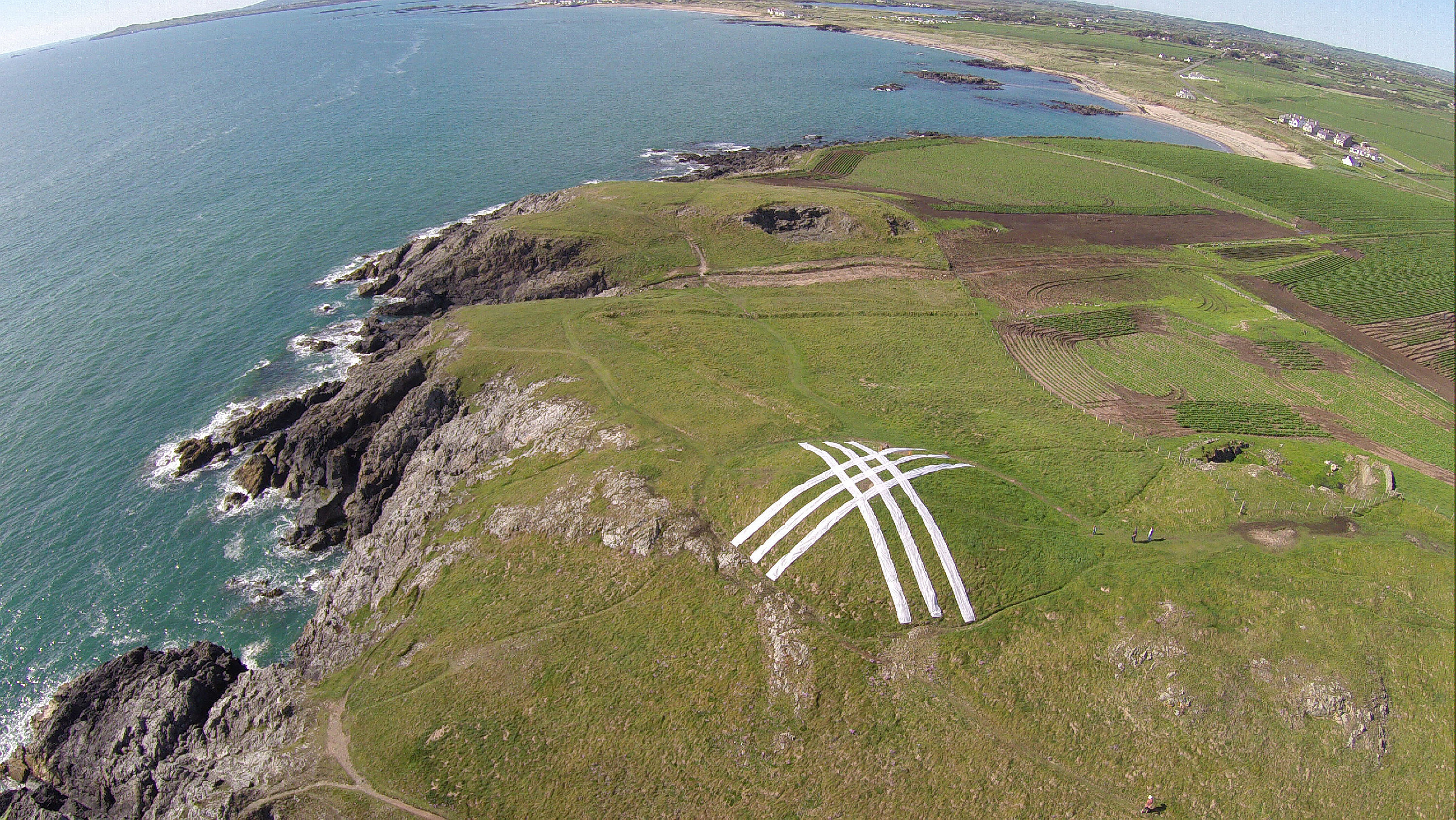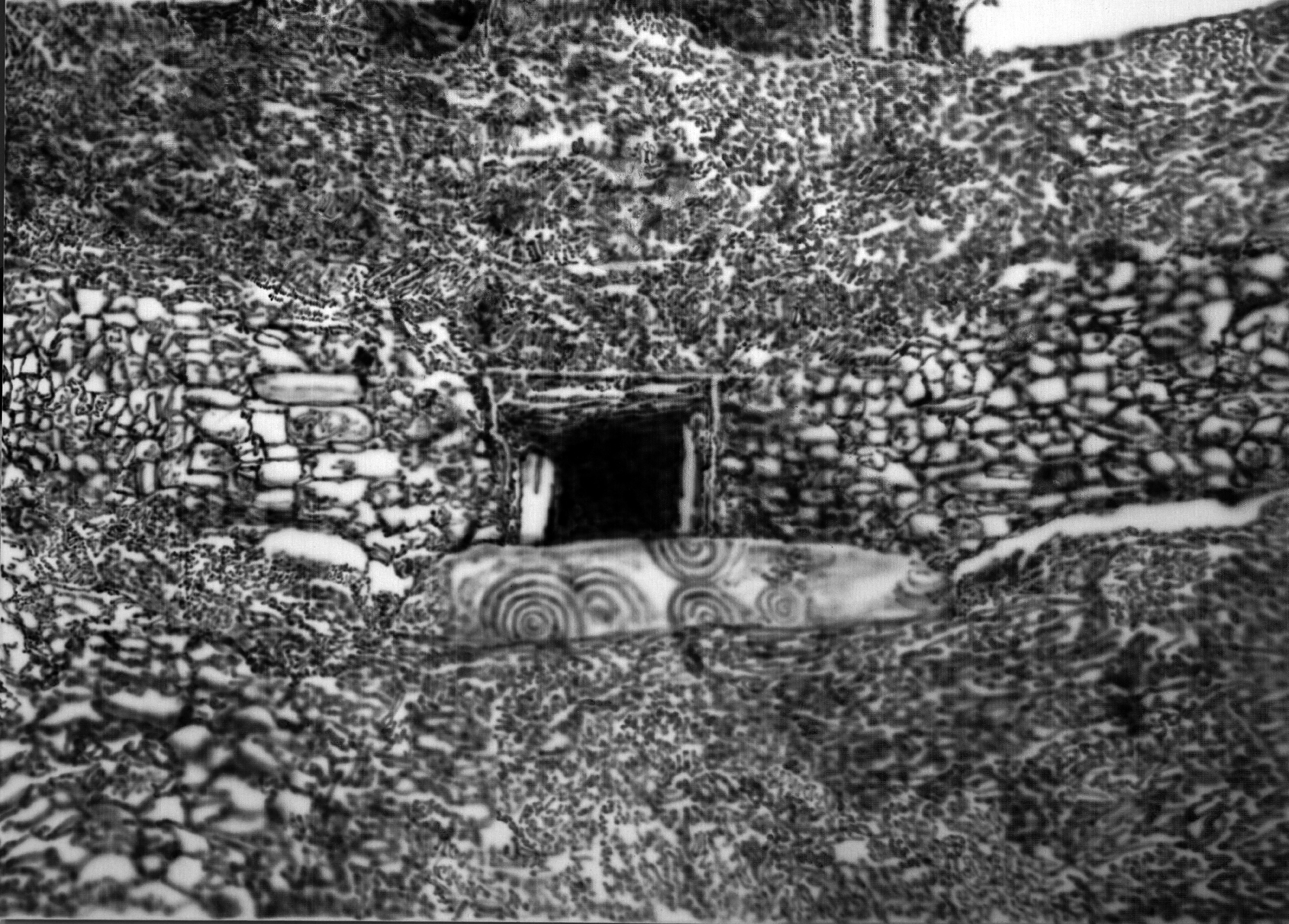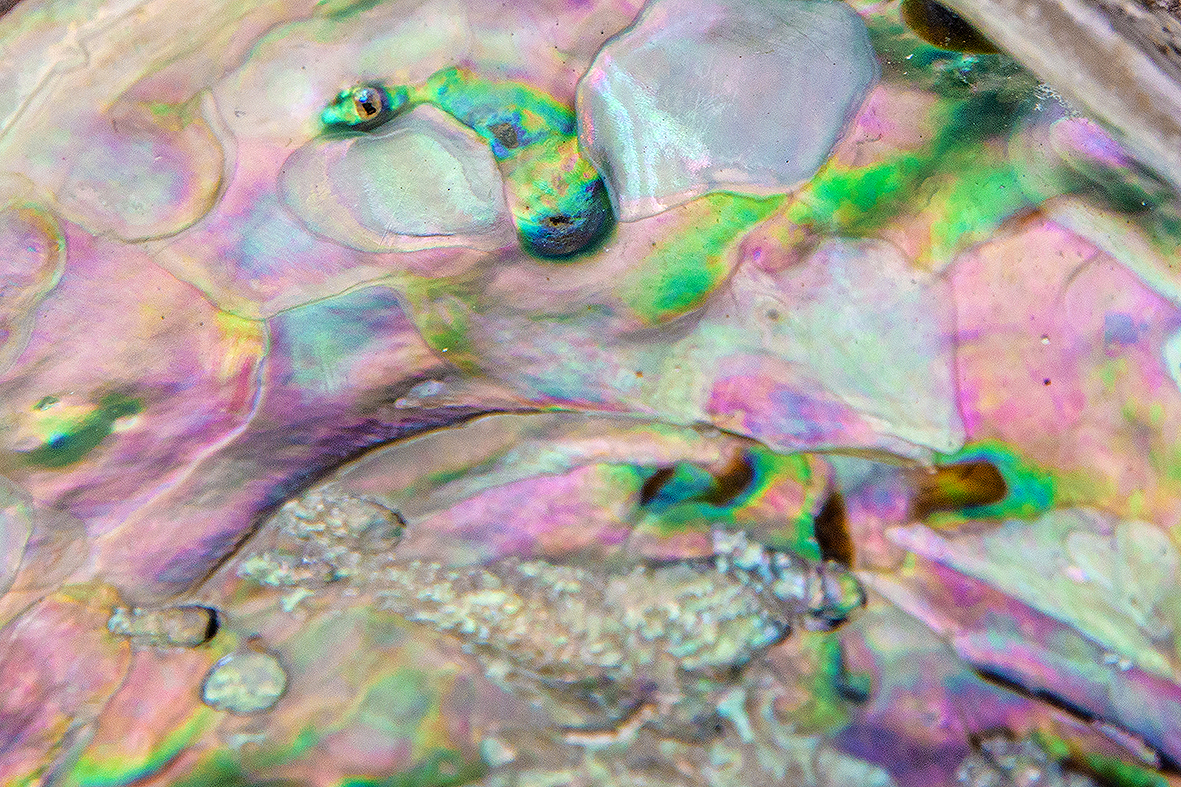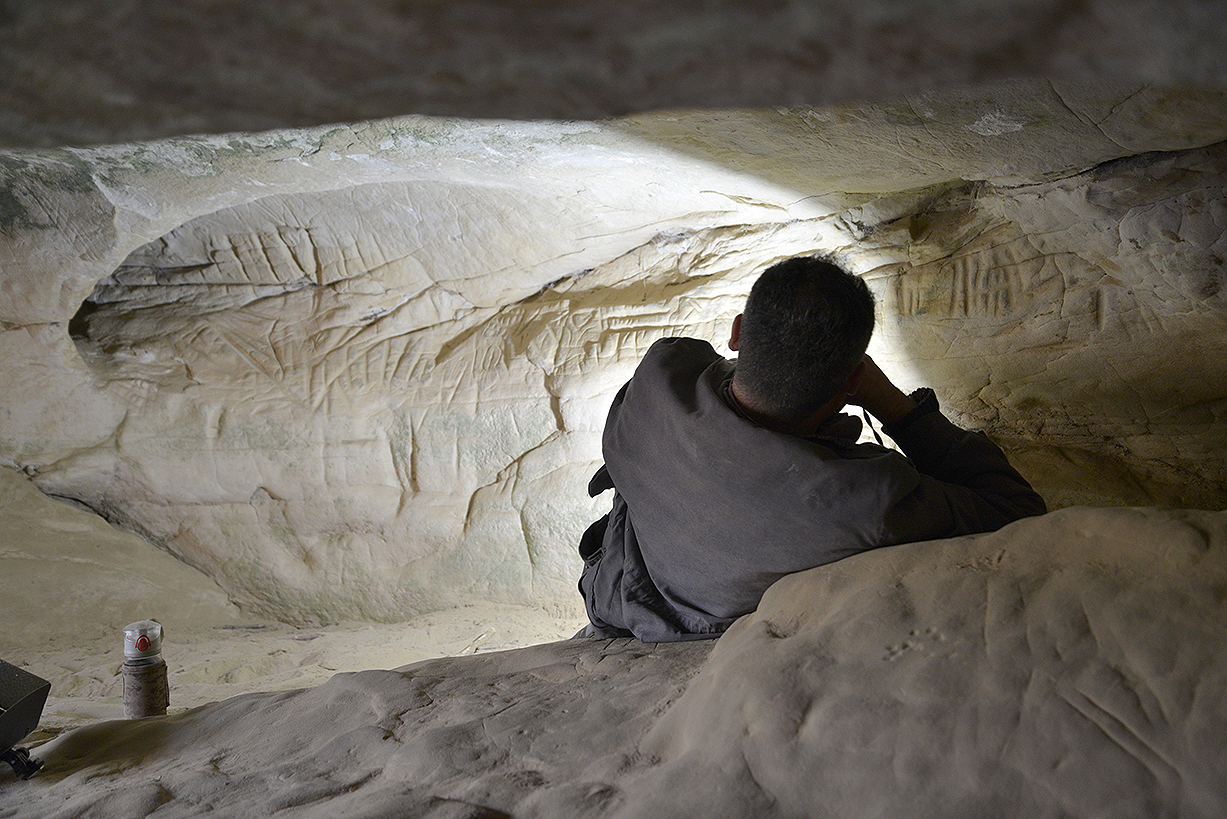“In the beginning were the straight lines and the rhythms”
Professor Dragos Gheorghiu
These words, written well before the Covid19 pandemic, anticipates the sudden need for simplicity, the sudden need for something universal and the sudden need for common understanding that was to become important during the strangely lonesome months of lockdown and social distancing in the spring of 2020. They also echo one of the key motivations for this virtual exhibition: The curiosity and interest for pre-historic artistic expression and the potential relevance for contemporary art, for artistic thinking and for the understanding of both ancient and contemporary human behaviour and mind.
The exhibition participants are all part of the ongoing Artistic Research Project: Matter, Gesture and Soul (MGS) which started in October 2019 and which is located at the Art Academy, Faculty of Fine Art, Music and Design, University of Bergen.
MGS is presently associated with two major archaeological research projects, one in France and one in South Africa. The first one in Fontainebleau outside of Paris: Its main objective is to investigate, secure and document Mesolithic engravings in the sandstone massifs of Île-de-France. These sites contain a big number of stone age engravings notably from the Northern European Mesolithic period.
The project is led by Professor Boris Valentin from The University of Sorbonne in Paris.
MGS is also following archaeological research taking place in the Blombos cave in South Africa, a work currently led by Professor Christopher Henshilwood and the Centre for Early Sapience behaviour in Bergen (SapienCE). The SapienCE centre is a part of MGS represented by Professor Francesco d´Errico and independent researcher Petro Cecilia Keene.
This particular virtual exhibition, especially made for the EAA annual meeting revolves around the key words: Body, Memory and Repetition. These three words resonate in different ways with the artistic research that is currently being conducted within the project and is through its subject matter and methodology reflecting the overall 2020 EAA theme: Networking.
The projects in the exhibition are in different ways responding to the sites and the scientific approaches represented by both the above-mentioned scientific research projects and around timeless issues of human conditioning, symbolic thinking, ways of communication, memory and aesthetical components in modern conception of ancient human traces and ancient and contemporary art and sign production.
Professor Åsil Bøthun from Norway has produced new works for this exhibition, drawing inspiration from the phenomena called cave popcorn. She is inspired by visits to archaeological sites in Fontainebleau where she associated water to have played a natural part in the composition of the stone age carving inside the caves.
Ph.D. candidate Maarten Vanden Eynde from Belgium is contributing with works dealing with memory, matter and information. He describes one of his works named Immortality Drive as: “An archive for the topographical and chronological mapping of political histories, to recollect important people, places and mythical migration routes”.
Professor Dragos Gheorghiu from Romania has created a project called: Rhytmic Gestures - Rhytmic Patterns, that deals with the lines engraved and painted on ancient archaeological sites and their rhythms. He reproduces the isorhythmic gestures that generated them using different materials as tools and supports. Gheorghiu considers the straight line to be the result of the oldest symbolic activity of visual expression.
The Irish visual artist Professor Eamon O'Kane is investigating the recent past through a ten-year project at a site in Denmark and is using the archive accumulated from this research as a comparative to the distant past of a Neolithic site, Newgrange in Ireland.
Associate Professor Geir Harald Samuelsen from Norway is presenting an exposition with excerpts from two ongoing projects here named Interrupting the flow. One photographic project, one project including painting or more specifically: haptic drawing with colour. Both projects are responding to the above-mentioned ongoing research on the Mesolithic engravings in the area of Fontainebleau, France.
Ph.D. fellow Elin T. Sørensen from Norway and independent researcher Petro Cecilia Keene from South Africa are contributing with the joint video project Perlemoen, which concerns the marine snail abalone. Their shells have been found in archaeological sites around the world, ranging from 100,000-year-old deposits at Blombos Cave in South Africa to historic Chinese abalone middens on California's Northern Channel Islands. Today the abalones are threatened with extinction.
We sincerely thank the EEA and specifically President Felipe Criado-Boado for giving us the opportunity to contribute to the meeting through this virtual exhibition. We would appreciate a lot if you would leave a response in our mail.
On Behalf of MGS:
Associate Professor Geir Harald Samuelsen (Project Leader)
Ph.D fellow Elin Tanding Sørensen
Professor Dragos Gheorghiu
Oslo, July 2020
Mattergesturesoul.net
MGS on Research Catalogue











